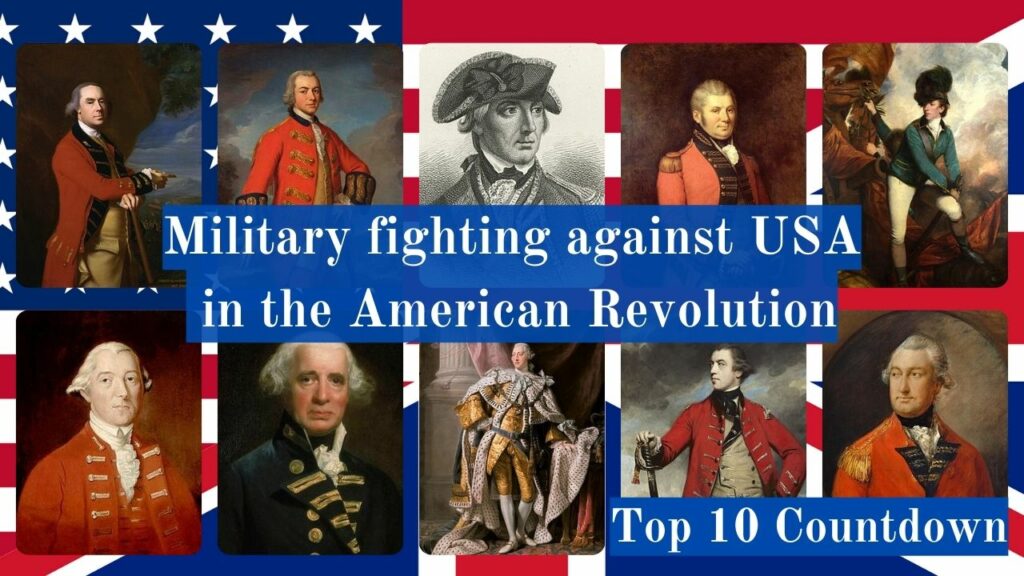
In a previous Top 10 countdown, we covered the Top 10 Americans leading the fight in the American Revolution. Today, we look at the losing team, the Top 10 Military Fighting Against USA in America Revolution. Let’s get started:
British Military Fighting Against USA in American Revolution – Summary
- King George III (1738–1820): As the reigning monarch of Great Britain during the American Revolution, King George III played a symbolic role in directing British military efforts.
- Sir William Howe (1729–1814): The early Commander-in-Chief of British forces, Howe led successful campaigns in New York and Pennsylvania. His cautious approach and inability to decisively defeat Washington led to his recall.
- Sir Henry Clinton (1730–1795): Succeeding Howe, Clinton faced challenges in managing the war effort. His strategy of controlling key coastal areas, including the Southern theater, had mixed success.
- John Burgoyne (1722–1792): A British general best known for his surrender at the Battle of Saratoga, Burgoyne’s defeat marked a turning point in the war. His ambitious plan to cut off New England from the rest of the colonies ultimately failed.
- Charles Cornwallis (1738–1805): Cornwallis served as a prominent British general in the Southern theater. Despite early successes, his surrender at Yorktown in 1781 marked the conclusive end of major fighting in the war.
- John Graves Simcoe (1752–1806): A Loyalist leader and commander of the Queen’s Rangers, Simcoe was known for his guerrilla warfare tactics, impacting the southern front of the war.
- Banastre Tarleton (1754–1833): A British cavalry officer, Tarleton was notorious for his aggressive tactics. His actions had a notable impact on the southern front of the war.
- Thomas Gage (1719–1787): The British military governor of Massachusetts before the war, Gage faced early challenges in dealing with colonial unrest, including the Battles of Lexington and Concord.
- Lord Richard Howe (1726–1799): As Admiral of the British Navy, Lord Richard Howe played a significant role in coordinating naval operations during the American Revolution. He participated in the early stages of the conflict and attempted to negotiate peace with the Continental Congress in 1776.
- Sir Guy Carleton (1724–1808): Carleton served as the British military commander-in-chief in North America during the latter part of the war. His efforts included overseeing the withdrawal of British forces from the United States in accordance with the Treaty of Paris in 1783.
Detailed Countdown
10. Sir Guy Carleton
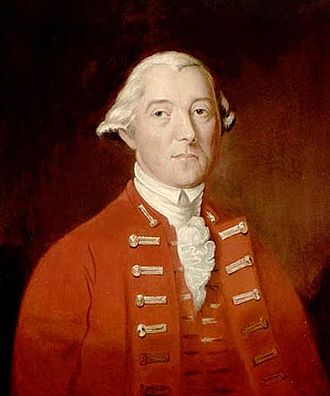
Sir Guy Carleton, born on September 3, 1724, in Strabane, County Tyrone, Ireland, was a British military officer and colonial administrator. Carleton served as the Governor of Quebec during the American Revolution. He played a crucial role in negotiating the withdrawal of British forces from the newly independent United States in 1783.
Ten interesting contributions in the American Revolution by Sir Guy Carleton:
- Evacuation of New York: Carleton oversaw the evacuation of British forces from New York City in 1783, marking the end of British control in the region.
- Negotiation of the Treaty of Paris: He played a key role in negotiating the Treaty of Paris in 1783, which officially ended the American Revolutionary War and recognized the independence of the United States.
- Respect for Civilian Rights: Carleton was known for his efforts to protect the rights and property of American civilians during the conflict, earning him a reputation for fairness.
- Creation of Canada as a Nation: Carleton contributed to the establishment of Canada as a separate nation within the British Empire, implementing policies that promoted loyalty among Canadian residents.
- Support for Loyalists: Carleton worked to assist Loyalists who sought refuge in Canada, providing them with land and support to rebuild their lives.
- Commander-in-Chief of British Forces in North America: Carleton served as the Commander-in-Chief of British forces in North America during two separate terms, demonstrating his commitment to the British cause.
- Strategic Retreats: Carleton’s tactical skill was evident in his ability to conduct strategic retreats when necessary, minimizing losses for the British forces.
- Advocacy for Conciliation: He favored a more conciliatory approach towards the American colonies, advocating for political solutions rather than relying solely on military force.
- Respect for American Officers: Carleton showed respect for American military officers, fostering a sense of professionalism between opposing forces.
- Establishment of a Naval Base: Carleton played a role in establishing the naval base at Halifax, Nova Scotia, strengthening British maritime capabilities.
Conclusion:
Sir Guy Carleton was a skilled military commander and diplomat who played a pivotal role in shaping the outcome of the American Revolution. His efforts in negotiation, strategic decision-making, and commitment to fairness left a lasting impact on the development of both Canada and the United States.
9. Lord Richard Howe
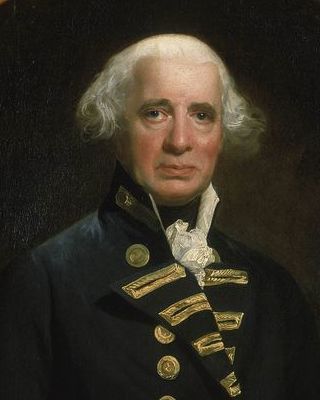
Lord Richard Howe, born on March 8, 1726, in London, England, was a British naval officer and politician. He is best known for his role as the Admiral of the British fleet during the early years of the American Revolution, playing a significant part in several key naval engagements.
Ten interesting contributions in the American Revolution by Lord Richard Howe:
- Appointment as Peace Commissioner: Lord Howe was appointed as a Peace Commissioner in 1776, indicating the British government’s willingness to negotiate with the American colonies for a peaceful resolution.
- Attempted Reconciliation: As a Peace Commissioner, Howe made efforts to engage in peace talks with representatives of the Continental Congress, showing a desire for reconciliation.
- Battle of Long Island: He led the British naval forces during the Battle of Long Island in 1776, demonstrating strategic acumen and naval prowess.
- Capture of New York City: Lord Howe played a key role in the capture of New York City in 1776, a significant military success for the British forces.
- Naval Blockade: Howe implemented effective naval blockades, restricting the movement of Continental Army and supplies, contributing to the British war effort.
- Resignation Over Strategy: Lord Howe resigned from his position in 1778 due to disagreements with the British government’s military strategy in North America, particularly the lack of support for a conciliatory approach.
- Amicable Relationship with Washington: Despite being adversaries, Howe maintained a respectful and amicable relationship with General George Washington, fostering a sense of honor on both sides.
- Introduction of Limited Warfare: He advocated for a more restrained and limited warfare approach, emphasizing rules of engagement and the humane treatment of prisoners.
- Participation in the Philadelphia Campaign: Howe played a significant role in the Philadelphia Campaign of 1777, aiming to capture the American capital and weaken the rebellion.
- Legacy of Naval Leadership: Lord Richard Howe left a lasting legacy in British naval history, with his strategic decisions and leadership during the American Revolution influencing future naval doctrines.
Conclusion:
Lord Richard Howe’s distinguished naval career and diplomatic efforts during the American Revolution showcased a commitment to both military excellence and the pursuit of peaceful resolution. His legacy endures through his contributions to naval strategy and attempts at reconciliation during a tumultuous period in history.
8. Thomas Gage
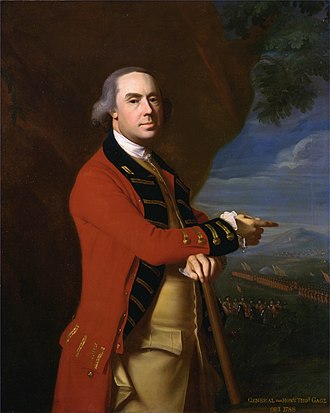
Thomas Gage, born on March 10, 1719, in Firle, Sussex, England, was a British Army general and colonial official. Gage played a crucial role in the early stages of the American Revolution, serving as the Commander-in-Chief of British forces in North America.
Ten interesting contributions in the American Revolution by Thomas Gage:
- Governor of Massachusetts Bay Colony: Gage served as the last British-appointed governor of the Massachusetts Bay Colony, facing increasing tensions with the colonists.
- Response to the Boston Tea Party: He implemented harsh measures in response to the Boston Tea Party in 1773, including the Intolerable Acts, which further strained relations between the colonies and Britain.
- Lexington and Concord: Gage ordered the expeditions to Lexington and Concord in April 1775, marking the beginning of armed conflict between British and American forces.
- Siege of Boston: After the battles of Lexington and Concord, Gage found himself under siege in Boston, a situation that set the stage for a prolonged conflict.
- Failed Diplomacy: Gage attempted to use diplomatic means to quell the rebellion but faced challenges in finding a peaceful resolution with the American colonial leadership.
- Evacuation of Boston: Gage orchestrated the evacuation of British forces from Boston in 1776, following the successful fortification of Dorchester Heights by the Americans.
- Criticism and Recall: His handling of the early stages of the war led to criticism, and Gage was eventually recalled to Britain in 1775, replaced by General William Howe.
- Military Reforms: Gage initiated military reforms in the British Army, adapting strategies to the unconventional warfare tactics employed by the American forces.
- Perception of the Rebellion: He viewed the American rebellion as a civil war and struggled with the complexities of the conflict, often underestimating the determination of the colonial forces.
- Impact on British Strategy: Thomas Gage’s experiences in the early phases of the American Revolution influenced subsequent British military strategies, as his difficulties shaped the approach taken by his successors.
Conclusion:
Thomas Gage’s tenure as Commander-in-Chief in North America marked a pivotal period in the unfolding of the American Revolution. His attempts at governance and military leadership, while met with challenges, significantly influenced the course of the conflict and the subsequent strategies employed by both British and American forces.
7. Banastre Tarleton
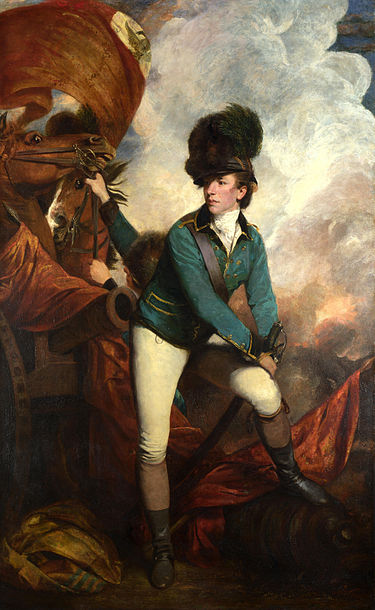
Banastre Tarleton, born on August 21, 1754, in Liverpool, England, was a British Army officer and a prominent figure in the American Revolution. Known for his aggressive tactics, Tarleton played a significant role in several key battles during the Southern theater of the war.
Ten interesting contributions in the American Revolution by Banastre Tarleton:
- Early Military Career: Tarleton began his military career at a young age and gained a reputation for his skill and bravery during the American Revolutionary War.
- Southern Campaigns: He played a crucial role in the Southern theater of the war, participating in campaigns in the Carolinas and engaging with American forces.
- Victory at Waxhaws: Tarleton led British forces to a decisive victory at the Battle of Waxhaws in 1780, earning him both praise and criticism for the harsh treatment of American prisoners.
- Role in the Battle of Camden: He played a key role in the Battle of Camden in 1780, a significant engagement in the Southern theater that furthered British control in the region.
- Controversial Tactics: Tarleton became known for his aggressive and controversial tactics, earning him the nickname “Bloody Ban” among American patriots.
- Capture of Charleston: He was instrumental in the capture of Charleston in 1780, marking a major strategic success for the British in the Southern campaign.
- Commander of the British Legion: Tarleton commanded the British Legion, a combined force of cavalry and infantry known for its effectiveness in battle.
- Defeat at Cowpens: His forces suffered a significant defeat at the Battle of Cowpens in 1781, a turning point that weakened British control in the South.
- Influence on Military Strategy: Tarleton’s tactics and experiences in the Southern theater influenced British military strategy, shaping their approach to the conflict.
- Post-War Career: After the American Revolution, Tarleton had a successful political and military career in Britain, serving as a Member of Parliament and later as a general.
Conclusion:
Banastre Tarleton’s aggressive and controversial military career in the Southern theater left an indelible mark on the American Revolution. While his tactics garnered both acclaim and criticism, his influence on British military strategy and subsequent political career showcased the complexities of individuals involved in this pivotal period of history.
6. John Graves Simcoe
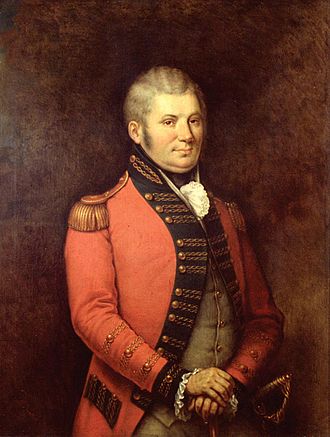
John Graves Simcoe, born on February 25, 1752, in Cotterstock, Northamptonshire, England, was a British army officer and the first Lieutenant Governor of Upper Canada. Simcoe played a notable role in the American Revolution, particularly in the later stages of the conflict.
Ten interesting contributions in the American Revolution by John Graves Simcoe:
- Early Military Service: Simcoe began his military career in the British Army and quickly rose through the ranks due to his leadership skills and tactical acumen.
- Participation in the Battle of Brandywine: He fought in the Battle of Brandywine in 1777, a pivotal engagement during the Philadelphia Campaign, showcasing his military prowess.
- Capture of Fort Billingsport: Simcoe led a successful raid on Fort Billingsport in 1777, demonstrating his strategic abilities in disrupting American supply lines.
- Creation of the Queen’s Rangers: He raised and commanded the Queen’s Rangers, a Loyalist regiment known for its effectiveness and loyalty to the British Crown.
- Role in the Southern Theater: Simcoe was transferred to the Southern theater and played a key role in engagements in the Carolinas, contributing to British efforts in the region.
- Skirmishes in Virginia: He led his forces in numerous skirmishes in Virginia, showcasing his adaptability in unconventional warfare.
- Governor of Upper Canada: After the American Revolution, Simcoe became the first Lieutenant Governor of Upper Canada (modern-day Ontario), where he implemented policies and infrastructure projects that shaped the region’s early development.
- Abolitionist Stance: Simcoe advocated for the abolition of slavery in Upper Canada, marking him as one of the few prominent figures of his time to take a stand against the institution.
- Creation of the First Canadian Legislature: Under his leadership, Upper Canada saw the establishment of its first elected legislative assembly, laying the foundation for Canadian governance.
- Construction of Yonge Street: Simcoe initiated the construction of Yonge Street, one of Canada’s oldest and longest roads, promoting connectivity and settlement in the region.
Conclusion:
John Graves Simcoe’s multifaceted contributions to the American Revolution, coupled with his later role in the development of Upper Canada, highlight a career marked by military skill, governance, and a commitment to progressive ideals. His legacy extends beyond the battlefield, influencing the early shaping of Canada as a nation.
5. Charles Cornwallis
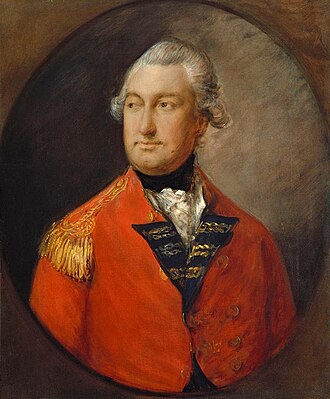
Charles Cornwallis, born on December 31, 1738, in London, England, was a British army officer and statesman who played a significant role in the American Revolution. Cornwallis is best known for his command in the Southern theater and his ultimate surrender at the Battle of Yorktown in 1781.
Ten interesting contributions in the American Revolution by Charles Cornwallis:
- Early Military Career: Cornwallis began his military career with distinction, gaining experience in various campaigns in Europe before his service in the American colonies.
- Command in the Southern Theater: Appointed as the British commander in the Southern theater in 1780, Cornwallis sought to reclaim territory and suppress the rebellion in the Carolinas.
- Capture of Charleston: Cornwallis led the successful capture of Charleston in 1780, marking a major victory for the British forces and establishing him as a formidable commander.
- Strategic Mistakes: Despite early successes, Cornwallis made strategic errors, including the decision to split his forces and the pursuit of the elusive American forces under Nathanael Greene.
- Guilford Courthouse: The Battle of Guilford Courthouse in 1781, though a British victory, proved costly, weakening Cornwallis’s forces and impacting the overall British position in the South.
- Retreat to Yorktown: Facing pressure from American and French forces, Cornwallis retreated to Yorktown, Virginia, where he found himself besieged by the combined Franco-American army.
- Surrender at Yorktown: Cornwallis’s surrender at the Battle of Yorktown in 1781 marked a turning point in the war, leading to the eventual recognition of American independence.
- Post-War Political Career: After the American Revolution, Cornwallis returned to Britain and later served in various political positions, including Governor-General of India.
- Abolitionist Stance: Cornwallis advocated for the gradual abolition of slavery in the British Empire, showcasing a progressive stance on a contentious issue.
- Legacy in British Military History: Despite his ultimate defeat in America, Cornwallis is remembered as a capable military leader, with his legacy influencing British military strategy and tactics.
Conclusion:
Charles Cornwallis’s role in the Southern theater and his surrender at Yorktown played a pivotal role in shaping the outcome of the American Revolution. Beyond the battlefield, his post-war contributions and progressive stances demonstrate a nuanced and influential figure in both military and political history.
4. John Burgoyne
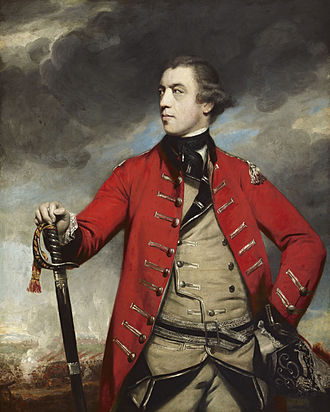
John Burgoyne, born on February 24, 1722, in Sutton, Bedfordshire, England, was a British army officer and politician. Best known for his role in the Saratoga campaign during the American Revolution, Burgoyne’s military endeavors had a profound impact on the course of the war.
Ten interesting contributions in the American Revolution by John Burgoyne:
- Military Career: Burgoyne had a distinguished military career in Europe before being assigned to the American theater during the Revolutionary War.
- Plan for the Saratoga Campaign: He devised a comprehensive plan to control the Hudson River Valley, intending to isolate New England from the other colonies.
- Capture of Fort Ticonderoga: Burgoyne successfully captured Fort Ticonderoga in July 1777, boosting British confidence in the early stages of the Saratoga campaign.
- Slow Advancement and Supplies Issues: His progress slowed due to cautious military tactics and logistical challenges, as he faced difficulties in securing necessary supplies.
- Battles of Freeman’s Farm: Engagements at the Battles of Freeman’s Farm in September 1777 marked the beginning of the Saratoga campaign, with mixed outcomes for both sides.
- Isolation and Surrender: Burgoyne’s army became isolated, surrounded by American forces. The lack of reinforcements and supplies forced him to surrender at the Battle of Saratoga in October 1777.
- Impact on French Alliance: The surrender at Saratoga was a turning point that influenced France to formally enter the war as an ally of the American colonies.
- Parliamentary Inquiry: Burgoyne faced a parliamentary inquiry in Britain to assess his conduct during the campaign, leading to debates about military strategy and leadership.
- Political Satire: His surrender at Saratoga became a subject of political satire and criticism in Britain, reflecting the growing disillusionment with the war effort.
- Post-War Political Career: Despite his setbacks, Burgoyne continued his political career, serving in Parliament and even contributing to the establishment of a theater in London.
Conclusion:
John Burgoyne’s ambitious plan for the Saratoga campaign, coupled with the subsequent surrender, had far-reaching consequences in the American Revolution. His military and political legacy includes both successes and failures, contributing to the evolving dynamics of the conflict and its impact on the broader geopolitical stage.
3. Sir Henry Clinton
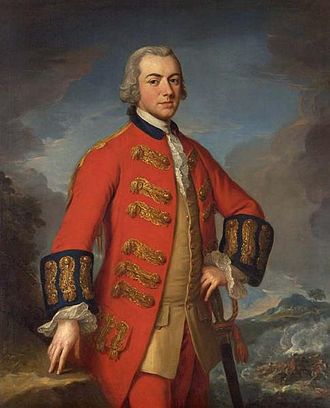
Sir Henry Clinton, born on April 16, 1730, in Newfoundland, was a British army officer and politician who played a prominent role in the American Revolution. Clinton served as the Commander-in-Chief of British forces in North America during a critical phase of the war.
Ten interesting contributions in the American Revolution by Sir Henry Clinton:
- Early Military Service: Clinton began his military career in the British Army and quickly rose through the ranks, gaining experience in various campaigns before his assignment to America.
- Battle of Bunker Hill: He played a significant role in the Battle of Bunker Hill in 1775, showcasing his leadership abilities early in the conflict.
- Occupation of New York City: After the British captured New York City in 1776, Clinton was instrumental in its occupation and strategic fortification.
- Philadelphia Campaign: Clinton assumed command in 1778 and led the British forces during the Philadelphia Campaign, engaging in battles such as Monmouth Courthouse.
- Evacuation of Philadelphia: Facing challenges and strategic setbacks, Clinton made the decision to evacuate Philadelphia in 1778, consolidating British forces in New York.
- Shift in Strategy: Clinton adopted a defensive strategy, focusing on holding key positions rather than engaging in large-scale offensives.
- Southern Strategy: He initiated the Southern strategy, shifting the focus of British military operations to the Southern colonies in an attempt to garner Loyalist support.
- Capture of Charleston: Under Clinton’s command, British forces captured Charleston in 1780, marking a significant victory for the British in the Southern theater.
- Guilford Courthouse: The Battle of Guilford Courthouse in 1781, although a British victory, inflicted heavy casualties and weakened the overall British position in the South.
- Relinquishing Command: Clinton eventually relinquished command in America in 1782, marking the end of his active military involvement in the American Revolution.
Conclusion:
Sir Henry Clinton’s leadership during a critical period of the American Revolution showcased both strategic acumen and challenges faced by the British forces. His decisions, including the Southern strategy, had a lasting impact on the course of the war and shaped the dynamics that led to the eventual American victory.
2. Sir William Howe
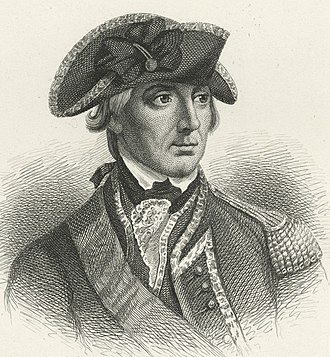
Sir William Howe, born on August 10, 1729, in England, was a British army officer and a key figure in the early stages of the American Revolution. Howe served as the Commander-in-Chief of British forces in North America and played a significant role in several major campaigns.
Ten interesting contributions in the American Revolution by Sir William Howe:
- Battle of Bunker Hill: Howe led British forces in the Battle of Bunker Hill in 1775, a costly victory that demonstrated the determination and resilience of the American forces.
- Capture of New York City: He orchestrated the successful capture of New York City in 1776, marking a strategic gain for the British early in the war.
- Declaration of Martial Law: Howe declared martial law in Philadelphia after its capture in 1777, implementing strict measures to control the city and suppress rebellion.
- Failed Peace Conference: Howe engaged in a failed peace conference with representatives of the Continental Congress in 1776, attempting to avert further bloodshed.
- Campaigns in the Middle Colonies: Howe conducted campaigns in the Middle Colonies, engaging in battles such as the Battle of Brandywine and the occupation of Philadelphia.
- Winter Quarters at Valley Forge: Howe’s decision not to pursue the retreating American forces after the Battle of Germantown allowed the Continental Army to establish winter quarters at Valley Forge.
- Resignation and Return to Britain: Howe resigned as Commander-in-Chief in 1778 and returned to Britain, facing criticism for his conduct during the war.
- Personal Relationships: Howe had personal relationships with individuals on both sides of the conflict, including American General George Washington and members of British aristocracy.
- Debate over Strategy: Historians continue to debate Howe’s strategic decisions, including his cautious approach and failure to decisively defeat the Continental Army.
- Legacy in British Military History: Despite his controversial legacy, Howe’s military career left a lasting impact on British military history, influencing subsequent commanders and strategies.
Conclusion:
Sir William Howe’s tenure as Commander-in-Chief in North America was marked by both successes and challenges. His decisions during critical engagements and his approach to the conflict had significant implications for the course of the American Revolution, shaping the dynamics that unfolded in the early years of the war.
1. King George III
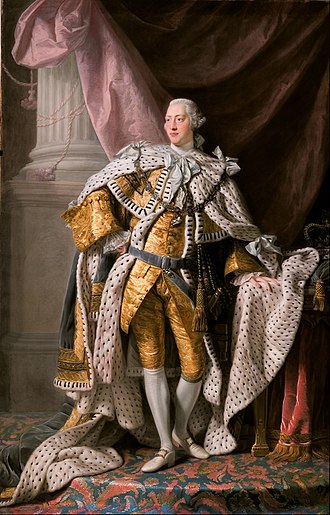
King George III, born on June 4, 1738, in London, England, was the King of Great Britain and Ireland during the American Revolution. His reign witnessed the unfolding of events that led to the colonies’ pursuit of independence and the establishment of the United States.
Ten interesting contributions in the American Revolution by King George III:
- Accession to the Throne: George III became King of Great Britain in 1760, ascending to the throne during a period of growing tensions with the American colonies.
- Enforcement of Taxation Policies: The King supported and endorsed taxation policies such as the Stamp Act and the Townshend Acts, contributing to increased resentment among the colonists.
- Declaration of Independence: King George III’s policies and perceived tyranny played a central role in the American colonies’ decision to declare independence in 1776.
- Opposition to Colonial Grievances: The King remained firm in his opposition to the colonial grievances, viewing them as acts of rebellion against the Crown.
- Appointment of Military Commanders: George III played a role in appointing military commanders, including Generals Howe, Burgoyne, and Clinton, shaping the British military strategy in North America.
- Continuation of the War: Despite opposition in Britain and among some politicians, King George III insisted on continuing the war against the American colonies, leading to a prolonged conflict.
- Influence on British Policy: The King’s influence on British policy contributed to the strategic decisions that ultimately led to British setbacks, including the Southern strategy and the focus on maintaining control in the North.
- Personal Role in Decision-Making: George III actively participated in decision-making, maintaining a strong stance against concessions to the American rebels.
- Impact on Public Opinion: The King’s unyielding position and perceived tyranny fueled anti-British sentiment not only in the colonies but also among some factions in Britain.
- Legacy of the American Revolution: King George III’s reign is closely tied to the legacy of the American Revolution, as his policies and actions played a central role in shaping the course and outcome of the conflict.
Conclusion:
King George III’s reign during the American Revolution marked a critical period in history, with his policies and decisions influencing the trajectory of the conflict. His role as a central figure in the events leading to American independence and the establishment of the United States is a defining aspect of his legacy.
You can read more Top 10 countdowns, or investigate our Famous Military section of the site.
